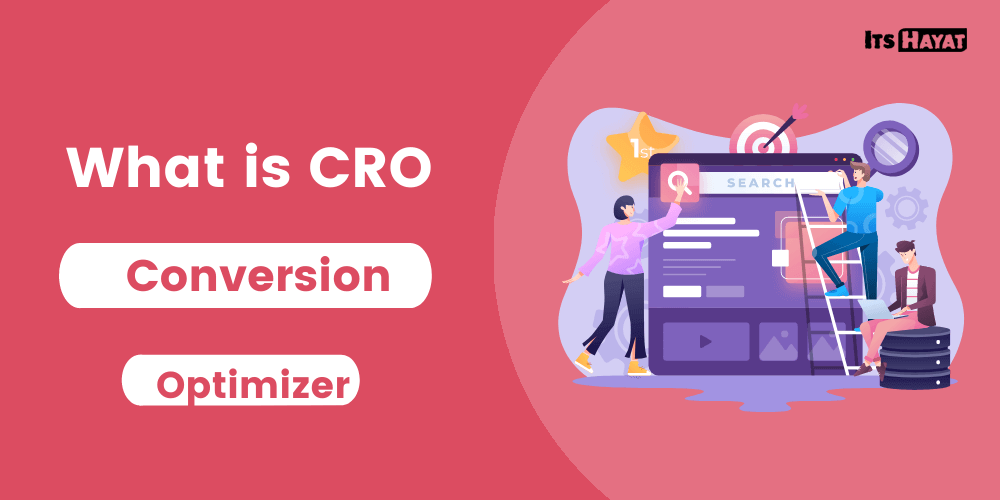CRO stands for Conversion Rate Optimization and means conversion optimization in Swedish. Conversion optimization means that you try to get a larger proportion of visitors to convert on the website, i.e., that more visitors meet a goal (e.g., a purchase).
What is a conversion?
A conversion is a fulfilled goal of your website. Examples of typical conversions include:
- The number of products sold.
- The number of collected email addresses.
- The number of leads generated, etc.
If you sell goods on the site, your primary goal will probably be to sell products. A conversion thus takes place when a product is sold.
So maybe you have other ‘secondary’ goals (conversions) that you want to track, such as collecting email addresses. You should also track the conversion rate of secondary goals so that you can make data-driven decisions when optimizing your website.
How to calculate the conversion rate
The conversion rate is calculated by dividing the number of goals achieved by the number of visitors:
- Number of goals met / number of visitors = Conversion rate
- Example: 10 goods sold / 100 visitors = 10% conversion rate
Improving the conversion rate is one of the most important activities companies have on their websites, as it is about getting more value out of the visitors you already have.
Conversion rate vs. conversion rate – what’s the difference?
The conversion rate is calculated from the number of goals met by the number of ad clicks (instead of visitors). Thus, it is not directly the same as conversion rate and is used primarily to determine the effectiveness of ads and campaigns.
Google describes the conversion rate as:
- Number of goals met / number of ad clicks = Conversion rate
Why is CRO so important on websites?
When a larger percentage of visitors convert for your goals, you naturally get more value from the traffic you already generate.
CRO is thus the solution to increase your ROI from all your marketing activities that you already spend a lot of money on.
Regardless of whether you drive traffic through search engine optimization, paid marketing, or multiple channels, you will get a good returned amount on your investment as the conversion rate increases.
Eight ways to CRO-optimize your website for more conversions:
Optimize landing page contentCRO optimization can be done by optimizing the page’s content and compelling marketing messages. To do this, you require to have a deep understanding of your visitors and their intentions when they land on the website.
Optimize web forms
Optimizing the website’s service processes is often about working with web forms, which many web pages have to run on their web pages. Web forms are something that can often be improved once you start analyzing them thoroughly. Web forms can have a very big impact on the conversion rate.
Improve usability and UX
Improving the usability of websites is an important part of conversion optimization. If users do not understand your site, it is quite difficult to get them to convert. To get started, ask yourself these questions:
- Does the website have a logical structure and navigation?
- Are your web forms easy and quick to fill out?
- Is the website free from technical errors that create frustration for the visitor?
These are a few examples of problems that can help you in optimizing. If you can answer yes to them, it’s probably going pretty well for you already! If not, here’s a new product only for you!
Also, collect continuous feedback from your users to improve the website with the users in focus.
Increase the feeling of trust in your website and service
In most studies, trust has proven to be one of the primary factors that affect visitors’ purchase intention. However, the credibility of the website is something that is affected in principle by everything on your website, such as the visual impression, the quality of the content, navigation, certifications, etc.
Make a stylish and effective web design.
Ease of use and aesthetics is something we humans appreciate on websites. With good web design, you can improve both.
With design tricks, such as the clever use of colors and shapes, you can make some elements more prominent than others.
So if your primary goal is for visitors to fill out a contact form, make sure it is very prominent and not to be missed.
Optimize your CTAs ( Calls To Action)
CTAs are thus the phrases that are intended to get the visitor to perform an activity (your goal). You should preferably have only one primary goal for each landing page so that you do not confuse the user.
To optimize your CTAs, make sure that:
- The selling CTA text motivates the user to take action.
- You use the above design tricks to make your CTA stand out.
Optimize customer journeys
Customer engagement and content marketing is a key part of conversion optimization, especially when it comes to SEO landing pages.
You need to understand the visitor’s search intention, at what stage of the buying process he is at, and then optimize the customer journey so that it naturally leads the visitor to take action.
Listen to the users/customers.
Listening to users is one of the most important pieces in conversion optimization. If you have the opportunity to talk to your customers or collect feedback through chat features or feedback forms on the website – do it! Listen to customers’ problems and satisfy their needs.
The tips that are mentioned above are just a few tips on how you can work with conversion optimization, but already these can make a big difference to your business or blog.
